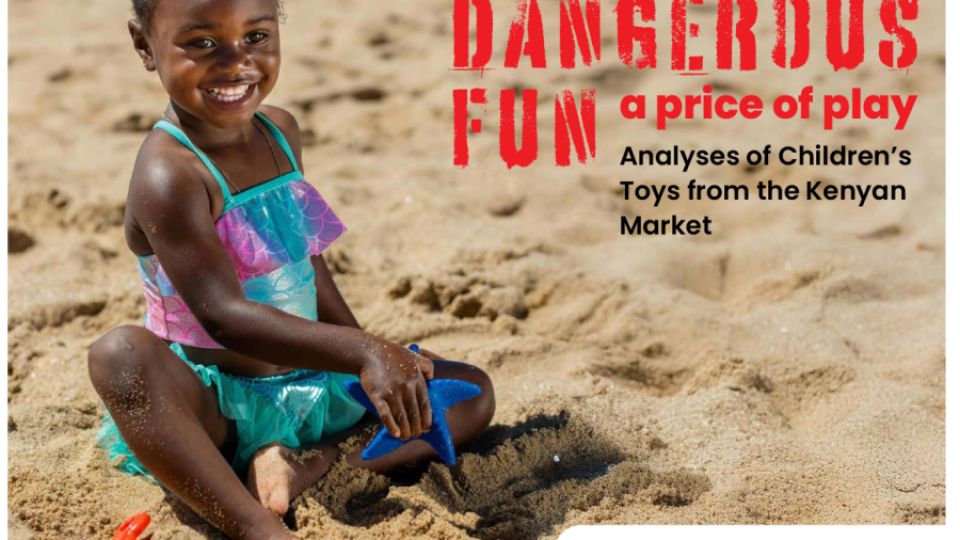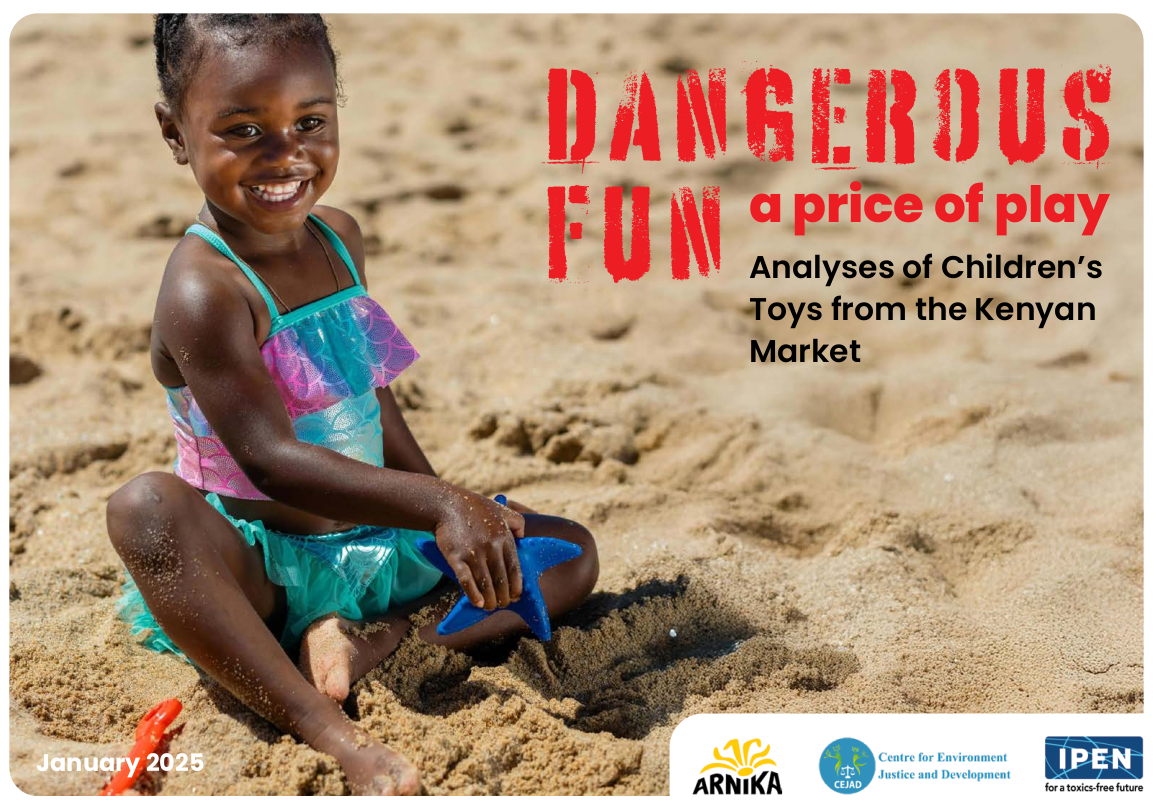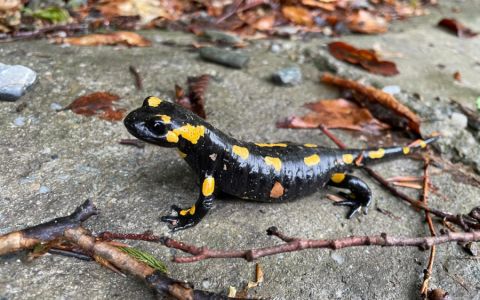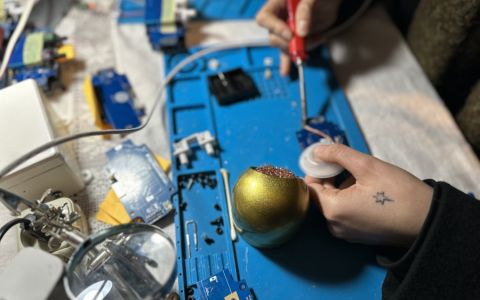NAIROBI/PRAGUE - A new study by a coalition of toxic substances experts has revealed dangerous chemicals in children's toys sold in the Kenyan capital, Nairobi. The report Dangerous Fun: A Price of Play - produced in collaboration with the Centre for Environment, Justice and Development (CEJAD, Kenya), Arnika (the Czech Republic) and the International Pollutants Elimination Network - uncovered alarming levels of toxics and called for both local and global systemic action.
Experts tested products directly aimed at children for a variety of hazardous substances, including phthalates, chlorinated paraffins and UV stabilisers, all of which pose significant risks to the health of the youngest and the environment. The tests focused on PVC-based toys and specifically included 11 samples, including dolls, inflatable balls, teething toys and wearable items such as an inflatable Spiderman suit, purchased from various retailers in Nairobi.
Laboratory tests showed that all the toys tested contained at least two phthalates - chemicals linked to reduced fertility over several generations, increased blood pressure, obesity and increased triglyceride levels. Secondly, all the toys tested contained so-called UV stabilisers, including chemicals linked to endocrine disruption with harmful effects on normal child development.
The findings reveal a serious threat to public health and underline the urgent need for stricter regulations on toxic plastics, both in Kenya and globally. The experts involved point out that children are particularly vulnerable to toxic exposure from such substances through ingestion, skin contact and inhalation.
"The results show that toys sold in the Kenyan market contain hazardous chemicals, posing serious health risks to children. To protect children's health and prevent further environmental contamination, it is essential that international agreements, such as the Stockholm Convention and the upcoming Global Plastics Treaty, ban the use of these toxic substances in toys and commit all countries to stricter regulation and labeling of products," comments Nikola Jelínek, author of the study from Arnika.
CEJAD Executive Director Griffins Ochieng adds that the toys are causing unacceptable harm and putting children's future at risk. "Children deserve safe toys without chemical threats to their healthy development. Action must be taken quickly to protect our children and public health from plastics and the toxic chemicals plastics release into our homes and communities," he urges.
The whole report can be freely downloaded HERE
In order to improve international comparability, the measured concentrations of toxic substances were contrasted with the regulations effective in Europe. Some samples exceeded European Union limits by more than 50 times. One of the most worrying discoveries was the aforementioned Spiderman suit, which contained 52,270 mg/kg of di(2-ethylhexyl) phthalate (DEHP), a known endocrine disruptor linked to reproductive toxicity and developmental disorders. DEHP is also a probable human carcinogen and a cardiovascular, renal and hepatic toxicant.
Another very concerning result came from the analysis of a teething toy, which showed high concentrations of the UV stabiliser UV-326. The presence of such a substance, which is potentially hazardous to the healthy development of children, in a product intended to be placed directly in the mouth by infants, is considered highly risky by the experts involved.

The laboratory analysis was carried out by experts from the Czech Faculty of Food and Biochemical Technology at the University of Chemistry and Technology in cooperation with Arnika's Toxics and Waste Programme. Jindřich Petrlík, an expert on toxic substances in waste and the environment who has participated in a number of similar studies around the world over the years, points out that the results from Kenya are not entirely exceptional.
The material used in the toys tested, PVC, is not only widespread, but also associated worldwide with the frequent occurrence of toxic admixtures to which users of these seemingly normal products are exposed. PVC has even been called a "poison plastic" because of the known emissions of toxic chemicals during its manufacture, use and disposal.
"PVC toys are not made solely of polyvinyl chloride. During production, additives such as phthalates, chlorinated paraffins and UV stabilisers are applied to increase the flexibility and durability of the material. However, these same substances pose significant health risks. Children are particularly vulnerable to the endocrine disrupting effects and can be highly exposed through mouthing and skin contact. It is an invisible, widespread and insidious threat that can only be addressed through systemic regulation,” says Petrlík.
In addition, nine out of eleven toys tested contained chlorinated paraffins, chemicals linked to cancer, neurodevelopmental and reproductive harm and endocrine disruption. Seven toys contained DEHA, a plasticiser linked to liver toxicity and reproductive harm. Five of the toys tested also contained barium, a toxic heavy metal linked to cardiovascular effects and kidney damage.
Taken together, these chemicals accumulate in the body, increasing the risk of stunted growth and poisoning children's developing organs. The substances found are also of concern in terms of the inherent risk of leaching into the environment and further exposure of children.
Local regulations will be weak without a strong international framework
The experts conclude their analysis with a series of national and international recommendations. For Kenya itself, they argue, for example, for mandatory restrictions on PVC to ensure that its use in sensitive consumer products is limited, as well as for strengthening other safety standards and strengthening both surveillance and related border controls to prevent the import and sale of toxic toys.
The study also emphasises the need for consumer awareness, including clear labelling of chemicals in toys and plastics, and industry responsibility to promote safe production and alternative materials.
At a global level, experts are calling for a reduction in the production of harmful plastics and additives by pushing for the elimination of toxic chemicals such as phthalates, chlorinated paraphines, and UV stabilizers under the United Nations Global Plastics Treaty. The study also highlights the fact that the current triple planetary crisis - including climate change, biodiversity loss and chemical pollution - is exacerbated by the production, use and disposal of plastics, including dangerous PVC plastic toys.
Other recommendations relate to the need for regulation and close monitoring of recycling processes to prevent hazardous substances from being transferred to other products through recycling. This is now often the case, for example, with products made from recycled plastic from electronics (e-waste). Experts are also recommending the harmonisation of safety standards to ensure that strong chemical safety regulations are accepted by all markets involved.
Experts also stress that international cooperation is essential to tackle hazardous substances in plastics and should be based on strengthening long-standing treaties regulating pollution, such as the Stockholm Convention (classifying persistent organic pollutants and preventing their use, thus environmental accumulation), the Basel Convention (strengthening the control of hazardous plastic waste imports and disposal) or the Rotterdam Convention (introducing the use of prior informed consent to regulate toxic chemical imports).









